#1972 tube stock
Text


pictures inside on the 1972 tube stock CHEERS
0 notes
Note
6 for the railway ask thingy?
AWAWA!! What my favourite locomotive/train type?
This one's tricksy!
I like me a train/tram where you can see all the way down those are really fun! Like Nottingham trams or the Elisabeth line trains! Trams in general I think are my favourite to travel on because in a lot of them you can sit up the front at see all the controls and buttons and stuff and I think that's really cool. Plus some of them go "ding" and its fun :D
I also like older dinky metro carriages like the M1-M5 rolling stock on the Brussels metro and the 1972 stock on the Bakerloo line on the Tube. I don't feel like I've been on a proper metro until I've been rattled to smithereens <3
#train ask game#i cant find my photos from when I went to brussels and my notts trip isnt on my laptop if I find I will reblog with more pics#thank you for asking anon!!!!
2 notes
·
View notes
Photo

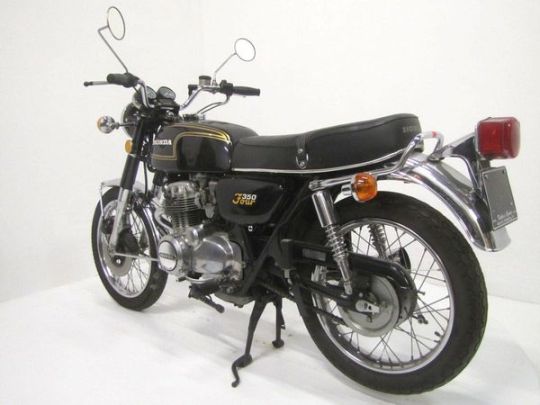
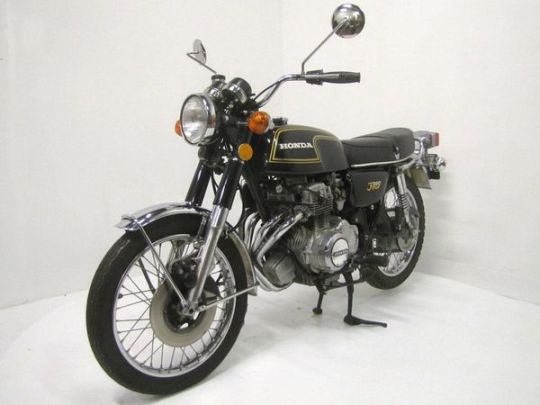
Things were pretty mellow regarding Japanese mid-size bike development in the mid-1960’s. There were two-stroke 250’s, 350’s and a 500 from three makers and Honda started offering the CB450 about 1965. Then in late 1968 we opened our copies of Cycle and Cycle World to photos from European industry motorcycle shows and saw the Honda CB750! Four megaphone mufflers, the brilliant engine sticking out from under the candy apple tank and that glorious machined brake rotor up front. If you were riding around 1969, even if you loved British bikes or Harleys, you couldn’t help but stare.
In that era the 750cc bike, a “45,” was king and what was road raced and dirt tracked in most places. In fact the Dick Mann ridden Honda CB750 won the Daytona 200 in 1970. But Honda realized riders might want something a bit smaller, more manageable. In 1972 they offered the CB350F and CB500 Four, both in-line fours mimicking the big CB750 though with vertical cylinders. Later each was punched out to 400 and 550ccs respectively. The 350’s and 400’s were sweet, but typical of in-line fours of the era, you had an 8500 to 10,000 RPM redline and you’d better use it to get some acceleration. The CB400F’s remain very collectible with their 4 into 1 pipe and decked seat, production Cafe Racers of sorts. The more docile four pipe 350F is collectible too, but the exhaust systems are very prone to rust through and maybe one in five good bikes have stock exhausts any longer.
The 350F rolling chassis is pretty typical for the era, a mix of tubes and stampings. Like its big brothers, it has a disk brake in front, and drum in the rear, free standing tach and speedo, flip gas cap, dual seat. As 350cc bikes, this 350F, the CB/CL 350K3 and SL350 Motosports were sold in dealerships side by side in this era. The F was sold 1972 to 1974. Of all the Honda fours, the 350 is likely the smoothest running, essentially vibration free.
This 1974 Honda CB350F with an aftermarket four-into-one exhaust was donated to the National Motorcycle Museum by Suzi Bellville and Hall of Fame inductee Eddie Fisher and we’re happy to have it on display.
Specifications:
Engine: In-Line Four-Cylinder SOHC
Type: Air-Cooled, Wet Sump
Bore & Stroke: 47mm x 50mm
Displacement: 347 cc
Ignition: Battery & Coil
Carburetor: Four 22mm Keihins
Horsepower: 34HP / 8000RPM Redline
Starting: Kick & Electric
Clutch: Wet, Multi-plate
Transmission: 5-Speed
Final Drive: Chain Driven
Frame: Tubular Steel Cradle
Suspension: Hydraulic Fork / Swingarm, Dual Shocks
Brakes: 260mm Disk Front / 179mm Drum Rear
Wheelbase: 57.5 Inches
Wheels/Tires: 3.00 x 19 / 3.50 x 18
Weight: 352 Pounds, Dry
13 notes
·
View notes
Text
Read The RPM Magazine January 2024 Issue - Celebrating 25 Years!

As we release the January 2024 issue, we also celebrate 25 years of Smoke and Gears with all of our readers, fans, subscribers and advertisers! Thanks for your support over the years!
100% Street Car...Period!...that also runs 7's in the quarter! Alan Whitaker’s killer 1972 Chevrolet Monte Carlo is a street car through and through, and it’s also the car he dreamed of owning since he was just 11 years old. “I was at a stop light in Whiteland IN. with my father at the age of 11 when a 1970-72 Monte Carlo blue with black vinyl top and rally wheels pulled up. I told my father that was the car I wanted when I’m old enough to drive,” explained Whitaker.
UNIQUE...Now here's something you just don't see every day, year...or decade! Almost 2 tons of love! The car measures 17 ½ feet long and from the factory weighed just shy, or just over 4,000 pounds, depending on options. This particular wagon was ordered as a 383 big block, 9-seater with air conditioning.
BLACK WIDOW...This multi-purpose 1,800-plus horsepower blown Vette street car is an inspired build. Life can be about focusing on negatives or the positives; Eric Simpson chose the latter. Simpson was once told that he was nothing but a shade tree mechanic and would never have anything worth talking about, "I built this car to prove the naysayers wrong!" This car was literally stock everything and is
now completely modified since 2019.
SMALL BUT FEROCIOUS...This Grudge racer Gremlin is a small-packaged supersized serving of nitrous'd nasty! By definition, a gremlin is ‘a mischievous folkloric creature invented at the beginning of the 20th century’. American Motors' definition was 'a pal to its friends and an ogre to its enemies,' a definition that Hollywood capitalized on with their movies, depicting the tiny beast as a cute furry little friend (a Mogwai)...
TECH INSIDER
Welding Exhaust System - Pt. 4 - Flange/Exhaust Port Interface So we are now finally ready to weld. Well, no, not quite. In the past three articles we have discussed various welding techniques, tube fitment and backpurging. As you can see, the key to a proper header build is attention to the details.
RPM HIDDEN GEM
All of the Above - From the pages of July 2017 - Gary Houghtaling's 1964 Ford Falcon X275 Gary Houghtaling,s twin turbo 1964 Falcon is entirely awesome!
Read the full article
0 notes
Text
The SEVEN Things You Must Learn for Financial Independence — Robert Kiyosaki

This is a excerpt from video where Robert Kiyosaki discusses some financial insights with Alexandra.
How to read a financial statement? -Robert Kiyosaki
You know when I was in business school, the most horrible subject of all was accounting, you know I was sound asleep, an accounting course and on top of that I argued with the accounting teacher because the accounting teacher had no idea what accounting was, that was an idiot.
So Rich Dad Poor Dad is more appropriate today because if you read Rich Dad Poor Dad this is all, it’s about it’s about a financial statement, income statement, balance sheet statement, of cash flow etc. how could it not be relevant when 99% of all people graduate from school don’t even know what a financial statement is?! And if they do they probably had the same accounting teacher I had. Mr. boring who wasn’t really an accountant he had a master’s in accountancy but he had never been an accountant, so that’s why I created the cash flow board game because it is, the accounting is the most important subject for individuals because this is what your banker wants to see.
Your banker wants to see our financial statement, this is your report card when you leave school if you have good financial statement, bankers will give you all the money you want see. Bankers have never asked me for my grades or my college I went through.
Why savers are losers?
There’s three kinds of money today. You guys gotta be aware of one is God’s money (gold, silver etc.) and God’s money is gold and silver so this silver and this is gold the reason I brought is most people don’t know what looks like and in this government my name was just fiat currency, which is the dollar the yen to pay SIL the Euro the yuan yeah, fake and everybody’s working hard for it just like eating fake food or drinking fake water, that’s why people are getting sick financially.
Because they working for fake money, yeah. okay and then those fake assets which with another part of their millennial the fake generation series but the reason I brought this (shows gold and silver coins) here is most people haven’t seen it this here is real silver, okay that’s what it looks like and so in 1972 and this here is gold yeah this is God’s money this is what it looks like the reason I call it God’s money is you can’t fake it you know you can fake it with a fake ETF like a gold ETF or a silver which I don’t touch cuz it smells as bad as the guys a print in that trap. you know I mean Jesus, but this is real money so you look at this here when I first started buying, that was a dollar forty, (silver) yeah. Today that’s sixteen dollars and this here is gold and the reason we bought it is most people haven’t seen or touch this is real this is God’s money. why does he has God’s money because it was here when the earth was created yeah and it’ll be here when we’re all dead and gone when you’re saving those fake dollars this will still be here yeah well those fake ETFs or those fake stocks.
So this here is called the greenbox ,these are there’s five hundred of these little tubes like this, five hundred points in here (Regular dollar, money) and this is one which is worth more God, yeah. this is worth more than all that, now the reason I say this is because for your generation this could be the biggest opportunity you’ll ever see, I’ll not make any Commission’s on this, but if you look at what happened with the fake Central Bank see the purpose of the central bank or the Fed or all you know the Japanese Bank the Bank of Japan the European Central Bank they pump out fake money. the purpose of central banks like the Fed is to protect the banks not, you there are criminal operation as far as I’m concerned. you’re gonna find most of my talks about the Fed. so I would recommend you guys buy this stuff don’t save money don’t save government money because they’re corrupt as hell as you know, save God’s money.
For remaining article click here
1 note
·
View note
Text
Shotguns - Part Two
In 1902, John Moses Browning introduced the Browning Auto-5, the first semi-automatic shotgun. Like his earlier designs, it fed from an underbarrel tube, but required no pump or lever to cycle the action, instead using the recoil of firing to cycle the action. Another, more modern semi auto shotgun is the Saiga 12, a Russian AK platform shotgun feeding from 5 or 12 round box magazines or a 20 round drum magazine.


In 1979, one of cinema’s most famous shotguns was designed and manufactured, the SPAS-12. The SPAS-12 is capable of switching between pump action and semi automatic, depending on the type of shell being used. Higher powered rounds can be used in semi automatic mode, the high recoil able to cycle the action, but low power rounds that do not produce enough recoil can be fired in pump action. The SPAS-12 features in many movies, such as Jurassic Park, and many games, such as Half-Life 1 and Left 4 Dead. The folding stock is the most recognizable part of the weapon is the folding stock. For this reason, many games leave it folded on top of the weapon, despite the impracticality of using the weapon without a stock and obstructing the iron sights. The imposing profile of the weapon was also recognized by the creators of the Alien movies, and the fictional M41A Pulse Rifle features the front of the SPAS-12 as its barrel.



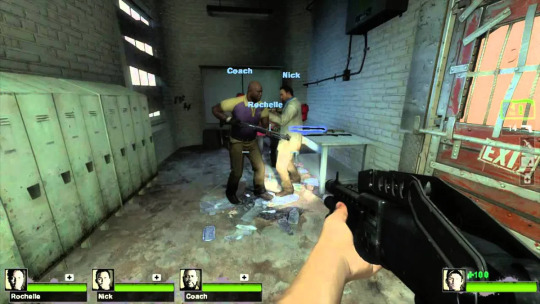

Fully automatic shotguns also exist, the first and most notable being the AA(Auto Assault)-12. The AA-12 was introduced in 1972 and is capable of firing full auto from either an 8 round box magazine or 20 round drum. The AA12 is also very controllable, due to recoil-absorbing springs in the stock, even allowing them to be dual wielded while retaining reasonable accuracy. It’s also a very reliable weapon, and can be submerged in water and still function without problems.
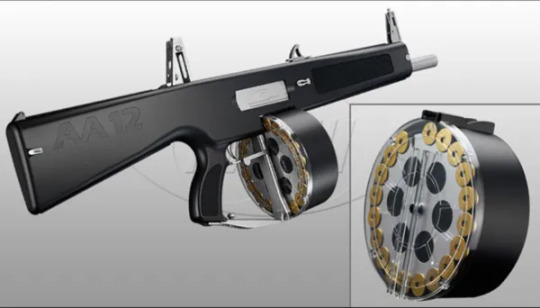
Shotguns can be loaded with many different types of ammunition. Most shotguns are 12 gauge, and the most common 12 gauge load is double-ought buckshot, containing 8 pellets per shell, though there are also shells with more, smaller pellets or less, larger. In addition, there are slugs, single projectiles which can extend a shotgun’s range closer to that of conventional rifles, and Dragon’s Breath shells, specialized incendiary rounds capable of saturating a target area with fire as well as lead.


0 notes
Text
I can't wait to get Tumblr blaze to promote my 1972 stock hate post on my Tube account
2 notes
·
View notes
Photo

Below you will find our Earth timeline. We hope that this puts our vision of the world of ZEROTONIN into focus, and gives you inspiration and ideas for your wonderful characters. Note that our site is explicitly canon divergent and follows the inception of many of our well known heroes and villains. However, it is ultimately at your discretion where your character may fit within this unique universe. Of course, this is a non-exhaustive list which does not cover every important point in history.
If you are interested and have any questions, do not hesitate to reach out.
______________________________________________________________
➔ PRESENT DATE: New Year’s Eve/New Year’s Day; January 1, 2000
1942: The secret military “Manhattan Project” created to develop the first US nuclear weapons, as part of the nuclear arms race between the United States, the Soviet Union and their respective allies.
1945: The first US nuclear bombs are used on Hiroshima and Nagasaki, Japan, ultimately leading to the end of World War II. Succeeding the war’s end, world governments competitively spend massive amounts of money to further the advancement of warfare weapons and technology, particularly weapons of mass destruction.
1947: The Central Intelligence Agency (CIA) is formed to collect and distribute information regarding foreign policy intelligence and analysis.
1950: Top secret Tamarind expedition executed. Many of Earth’s population note these UFO sightings, however this is not the first time it’s been recorded throughout human history; sightings and interaction date back to the early civilizations, though no scientific evidence is made public.
1957: Major breakthroughs in artificial intelligence are made.
1958: The National Aeronautics and Space Act is signed, creating the National Aeronautics and Space Administration (NASA). Shortly thereafter, a top secret facility in Nevada named “Area 51” is revealed to be used for testing related to space findings and “other experiments.”
1962: In reaction to the installation of Soviet nuclear missiles in Cuba, President Kennedy makes a similar show of force by unveiling new military weapons: particle beams, mother boxes, and boom tubes. Ultimately, however, the Soviet Union and the U.S. agree to not engage in any acts of war.
1969: Hover cars and boards hit the market.
1970: Justice Society of America (JSA) formed; the birth of “super” heroes.
1972: As the Watergate scandal breaks, Americans are glued to their phones and TVs, watching the debacle unfold through holographic broadcasts.
1974: Infant found amidst the debris left by a crashed UFO in Smallville, Kansas.
1981: Thomas Wayne, owner of Wayne Enterprises, and his wife Martha Wayne are murdered on Park Row in Gotham City.
1985: Much to the surprise of political pundits, despite his instrumental role in the development of the particle-beam gun, scientist and professor Thomas Morrow is appointed Secretary of Defense.
1986: A.I. pop group, New Kids on the Block, take the world by storm with their debut.
1988: LexCorp trades publicly for the first time, setting record high opening days on the U.S. Stock Market in only its first year.
1991: The end of the Cold War and the advancement of technology marks a seismic shift in priorities for the CIA. Responsibilities have grown to now include counterterrorism, nonproliferation of advanced weapons and weapons of mass destruction, warning/informing American leaders of important overseas events, counterintelligence, cyber intelligence and warning/informing American leaders of extraterrestrial threat/contact.
1992: Beating advancements made since the 60’s in Japan, America’s first high speed rail system is finally completed, with its grand terminal built in Central City, allowing for cross-country travel in only a matter of hours. Rogue scientists alert the media of the use of a cosmic force known as the speed force to aid the system.
1992: The first exoskeleton brain-implant is a success. Corporations make a mass move to implant exoskeleton chips into employees' brains. The landscaping and many manual labor intensive fields—construction, many of the skilled trade jobs—see rapid implementation of these originations.
1993: Women now make up half of the workforce, as the proliferation of automated robots in homes have alleviated traditional gender roles for most families.
1993: The Supreme Court of the United States rules in the first criminal action against a sentient A.I. A.I. who randomly gain sentience may still be punished by the State.
1994: The “Crime Bill” passes, leading to President Clinton’s commission of Arkham Asylum. The asylum is effective in cleaning up Gotham’s streets, and is hailed a massive success.
1996: Grounded cars officially phase out of the market, with manufacturers that were unable to keep up with hover car production going out of business (e.g. Ford, Honda).
1996: Kids go crazy for simulations. While they had been slowly gaining popularity in the workforce, allowing for greater employee training, they have now been fully monopolized by the entertainment industry. Spice Girls, Backstreet Boys and *NSYNC go on to become the largest sellers of simulation merchandise.
1996: Congress debates exoskeleton control after another black market exoskeleton death occurs.
1996: Supermodels Kate Moss and Naomi Campbell popularize synthetic high fashion.
1996: Reputable publications rank Metropolis the “Best City in the World”.
1996: The southern states grow weary of the country’s hyper-advancement, fearing these developments threaten their states’ rights to decide how best to allocate their resources.
1997: The Daily Planet building in Metropolis completes its reconstruction; at over 2,700 feet, it becomes the tallest building in the world.
1997: Civil rights activists complain of Arkham Asylum’s rising population and accuse the prison’s doctors of inhumane experimentation on patients.
1997: President Clinton lodges sanctions against Gotham City, New Jersey for its apparent-resurgence of crime, restricting their access to hover cars. Gotham is the only city to still rely on grounded cars.
January 17, 1998: Clinton-Lewinsky scandal breaks.
January 27, 1998: A resolution to amend the U.S. Constitution and allow the secession of the then-colloquially dubbed “Federalist States” is introduced in Congress.
August 1998: Florida man attempts to marry his automated robot.
November 3, 1998: The Arkham Asylum riots become the most violent prison riot in American history, resulting in several breakouts, deaths and thirteen officers taken hostage.
December 19, 1998: Bill Clinton is impeached by the House of Representatives.
January 1, 1999: Atlantis reappears.
January 7, 1999: The Senate trial in the impeachment of President Bill Clinton begins.
January 21, 1999: The United States Coast Guard makes the largest drug bust in American history, intercepting a ship with over 16,500 pounds of cocaine aboard headed for Gotham.
February 12, 1999: President Bill Clinton is acquitted by the Senate.
March 21, 1999: The Matrix—a movie with an all-A.I.-cast—becomes the first of its kind to win Best Picture at the Oscars following its January release.
April 8, 1999: Alexander Luthor surpasses $200 billion, edging out Warren Buffet and Bill Gates as the richest man in America.
April 1999: Through approval from Congress and states, cessation of the old U.S. South is finalized. Reorganization begins.
July 1999: Crime in Gotham City reaches a new peak, officially making it one of the most dangerous cities in the entire world; it holds the highest poverty, crime and murder rate in North America by a large margin. As a result, President Bill Clinton has military blockades set at its borders to prevent easy entry or exit, in hopes of keeping the crime wave contained within the city and managed.
August 1999: Sales of violent virtual reality video games and other media depicting graphic violence are limited across the country amidst the Gotham influenced panic, with experts warning of a wave of copycat criminals who will replicate their brutality.
August 1999: Tony Hawk became the first to land a “1000” on a hoverboard, following his “900” trick just months before on a skateboard.
October 1999: The New American Supreme Court rules LexCorp is in violation of antitrust laws, citing "unregulated and unreasonable practice" toward its competitors.
November 1999: The Tamarind expedition of 1950 is exposed by way of leaked CIA documentation. The dark web becomes a new priority for the reorganized government.
December 1999: Diana of Themyscira leaves Themyscira and sets foot on “Man’s World.”
December 31, 1999: The “New Reformation of the United States” and the “Federalist States of America” are recognized internationally as new territories.
January 1, 2000: Brainiac appears.
January 1, 2000: Independent news outlets report with alarm that Atlantis has become the international target of interest after Brainiac’s decree.
6 notes
·
View notes
Text
Hey guys! Welcome to my first post :D I’m going to be posting about one train every day! I’ll try and share as much as I can, and I’ll be sure to credit the photographers and websites I use in the process 😄 Thanks for reading!
First impressions are important, so for my first post I wanted to talk about a train that most people will know! A tube train! Specifically, the oldest train currently in use on the British Railway. The London Underground 1972 Stock is in use on the Bakerloo line of the underground, of which there are 36 trains in service. The design is based off of the older 1967 tube stock, which were in use on the Victoria line from 1968 to 2011. They’re the last deep-level tube line trains, and they’re due to be replaced in 2033.

(Photo from Google)
Info from a London Underground book
1 note
·
View note
Text
LUCY vs TIME
June 22, 1973
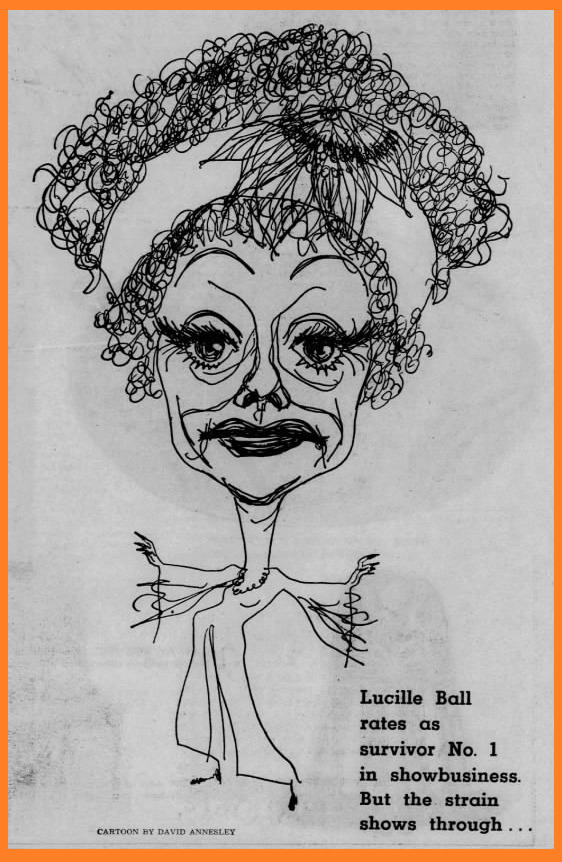
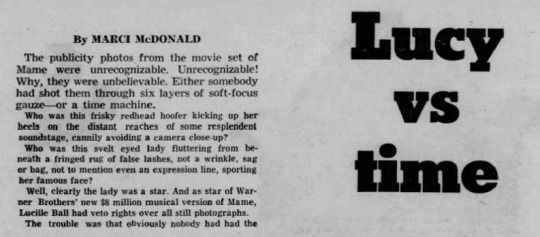
The publicity photos, from the movie set of Mame were unrecognizable. Unrecognizable! Why, they were unbelievable. Either somebody had shot them through six layers of soft-focus gauze - or a time machine.
Who was this frisky redhead hoofer kicking up her heels on the distant reaches of some resplendent soundstage, cannily avoiding a camera close-up?
Who was this svelte eyed lady fluttering from beneath a fringed rug of false lashes, not a wrinkle, sag or bag, not to mention even an expression line, sporting her famous face?
Well, clearly the lady was a star. And as star of Warner Brothers' new $8 million musical version of Mame, Lucille Ball had veto rights over all still photographs.
The trouble was that obviously nobody had had the nerve to tell her that if she could order reality rubbed out of a picture with a wave of the retoucher's brush, she couldn't pull the gauze over the eyes of an interviewer ushered into the Mame set to confront the living flesh, unretouched.
Time has not been unkind to Lucille Ball. No, beneath a billowing wine velvet and cream satin lounge suit, the svelte one-time chorus-girl's curves are still obvious. Despite a badly broken right leg from a skiing accident that had left the shooting of Mame stalled and the star in a cast for nearly a year, the shapely former showgirl's gams had now already carried her through a dozen dance routines up on top of pianos and down banisters that would have taxed a tap-dancer half her age.
At 61, Lucille Ball could pass for a dozen years younger. But only a dozen years.
The outrageous, outsize eyelashes now stick like pine spikes out of a swamp of tucks, puckers and bags etched around her shrewd big baby-blues. Her plastic face is a relief map of over-made-up wrinkles, the big bright red Cupid's-bow mouth lipsticked in a smile outside her own spidery upline.
But you don't survive 22 years on TV in the top ratings, get renewed once again this season when all about Bridgets and Bernies and Dean Martins (1) are falling to the network's chop, practically bear a baby and outlast a broken real-life marriage on the TV tube, take over a foundering corporation and build it into the single most powerful independent TV production house, without it showing in your face.
One look at Lucille Ball's face and you don't doubt it for a minute when Hal, her make-up man for 32 years, says she used to limp on to the Mame set in excruciating pain. Then, the minute the cameras clicked on, burst into a dazzling and seemingly effortless song-and-dance.
Not that the lady would admit it for a minute. "It was excruciating pain," she dismisses the subject airily.
But then these days she's not admitting much. It was a lesson learned the hard way. One recent fateful February day, over perhaps one too many Pouilly-Fuisses on the rocks, she was admitting so much so freely to the New York Times that the story read like a Hedda Hopper monologue.
On Desi Arnaz Sr., the Cuban bongo (2) player-bandleader she met and married out of a chorus line in 1940 and divorced 22 years later after a marriage that was even stormier off -screen than on: "He drank too much and he couldn't stand success."
On Desi Arnaz Jr., their 20-year-old son and his much-publicized romance with actress Patty Duke: "I had my doubts if the baby was Desi's at all. I said to him, "You feel responsible? Boy, you're all of 16 1/2 years old and you want to spend the rest of your life with this neurotic person?'"
On Liza Minnelli, then Desi's current fiancée: "They took her for over a million and a quarter more than her mother's debt. Just for beginners..."
One mention of the story now is enough to send sparks flying. "Why, that man should be..." she sputters over the reporter, "...spanked!"
It's a first burst of spontaneity from a lady who, once burned, is now so careful that she sounds at times as if he's dictating to the Library of Congress.
"I never thought I'd get this far, do so much, have such beautiful children," she says, chain-smoking in her dressing-room, all the wide-eyed telephone lineman's daughter from upstate New York. She knocks on wood.
"All I ever wanted was to get to vaudeville and I never made it."
When she hit New York to take acting classes at 16, the school sent back her mother's money, saying. "No talent." And now, refund in hand, 81-year-old DeeDee Ball, as the whole family calls her, sits in a front-row seat for every “Here's Lucy” show, just as she has done non-stop for the last 22 years.
Still it wasn't till 1951, when the Amazes dreamed up the “I Love Lucy” show, patterned after their own lives, as a way of keeping their marriage together and bandleader Desi home from the road, that success came.
But when it came, it was she who stole the show.
By two years later, 68 per cent of TV viewers in America were tuned in to see her show-by-show birth to Desi Arnaz Jr., whose arrival vied with the U.S. presidential election results for front-page space under the headline, "Lucy's $50 million baby."
Everybody, it seemed, loved Lucy except perhaps Desi Arnaz. Despite her insistence that "the series was happy there was no fighting. It was the greatest time of my life," she admits, "the trouble came much later. Only the last five years were hard."
Which means that the greatest time of her life lasted only a scant six years. When their marriage broke up officially in 1962 (3), friends introduced her to a stand-up comic named Gary Morton, now her producer, vice-president of Lucille Ball Productions, Inc., official show warm-up man and for 11 years now, Mr. Lucille Ball.
As her daughter Lucie, 22, and still a performer on the show, puts it. "She may be the king of stage 12, but at home she's queen Gary's the king!"
She indulges his passion for golf and a garage full of classic cars, but with the warning: "If he ever looks at another woman, I'll kill him."
She says she never makes a business move without him, but when she was left to head up the giant Desilu Corporation after her marriage break-up, it was she who was known as the woman shrewd enough to snap up “Mannix”, “Mission Impossible” and “Star Trek” when they were apparently doomed pilots, a comedienne who was not so comical in the executive suite.
But as for her much-vaunted business acumen, she is all denials and femininity.
"Me? No way. Desi did the whole thing. He was a fantastic businessman. I only took it over to build it up and sell it. I mean, there was a certain amount of building up to do."
When she took it over from Arnaz in 1961, Desilu had lost over $600,000. When she sold it seven years later, for $17 million in Gulf and Western stock, making her the conglomerate's largest stockholder and, some say, the wealthiest woman in Hollywood, the company had grossed $30-million and made a profit of ever $800,000.
"But everyone in the know knew I wasn't tough," she says. "No, the men I surrounded myself with were."
Still there a flinty glint behind the false lashes, a shrewd imperious purse to the painted lips, a ring to the wise-cracking whisky voice that's used to being heard. She moves around the Mame soundstage in queenly command, dispensing Norman Vincent Peal-doms, part star, part super-mother.
When it comes time for a scene featuring co-star Bea Arthur, she practically takes over directing from Gene Saks, Miss Arthur's husband. "Now did you tell her what side of the camera to be on?" she asks Saks, who looks like he might explode. "Now honey, toe your mark," she fusses over Bea, who grows quiet, explaining later:
"Lucy's really a dear. But sometimes it can get a little overpowering."
She doesn't talk to people without picking lint off their clothes, and straightening their collars, a habit that comes naturally enough to a woman who has her whole retinue, hairdresser, secretary, make-up man and driver of the last two decades - even her little picket-fenced French-provincial dressing-room trailer, with its false shutters and plastic ivy - picked up and transplanted wherever she strays from Lucy Lane where she presides at Universal Studios, year after year.
With her kids, she was, as daughter Lucie says, "Strict - and you want to believe it. We were the only kids we knew who had to work around the house for whatever money we'd get." Lucie still gets paid only scale for her mother's show.
But Desi Jr. wasn't exactly a natural. "He'd be asleep on the sidelines and I'd be ready to smack him," Lucy says, "When he said he was interested in serious acting, I said, 'Oh, really?' But he got out and worked. He surprised me. He surprised everybody. He even surprised himself."
Still, for all her talk about the joys of getting away to her Colorado ski lodge where she does "the cooking, the washing, the socks, the things I miss - not to mention the leg breaking - there's not much chance that Lucille Ball is going to be sitting the next round out, wallowing in domesticity, In the old rocking chair.
# # #
FOOTNOTES FROM THE FUTURE

(1) “Bridget Loves Bernie” was a 1972 sitcom about a mixed marriage between a Jewish man and a Catholic woman. Like Lucy and Desi, stars Meredith Baxter and David Birney were also married in real life. Despite excellent ratings (it was the highest-rated new show of the 1972-73 season) the show was cancelled after only one season. The official reason for its cancellation was that it was scheduled between two mega-hits, “All in the Family” and “The Mary Tyler Moore Show”, and its ratings weren't strong enough considering its choice position in the line-up.
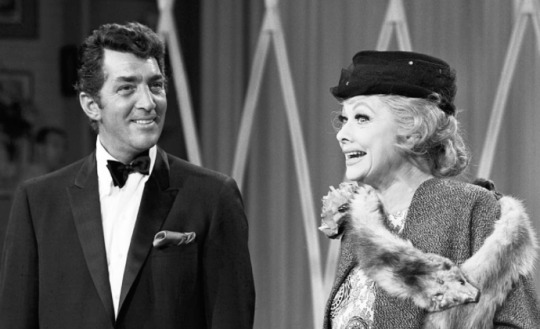
Also, that same season, the long-running “The Dean Martin Show” (1965-1974) was cancelled. Lucille Ball had made three appearances on the show, and he also appeared on hers.

(2) Conga drums, not bongos. It is slightly dismissive to call Desi Arnaz a bongo player.
(3) The editor makes the error of assuming that Lucy divorced Desi and Married Gary Morton the same year. She divorced Desi in April 1960, and married Gary in November 1961, a year and a half later.

This article was published in the Leisure section of The Vancouver (BC) Sun on June 22, 1973. The article was written by Marci McDonald and illustrated by David Annesley.
3 notes
·
View notes
Text
Iris Publishers - World Journal of Agriculture and Soil Science (WJASS)
Exploring Indicators of Food Choice for Chimpanzees at Taï National Park, Côte d’Ivoire: Aroma and Antioxidants
Authored by Chahan Yeretzian

Taï National Park in the southwest of Côte d’Ivoire is the largest remaining tropical rain forest in West Africa and covers 555,000 ha. While it is recognized as a “Biodiversity Hotspot”, with a rich natural flora and fauna, it is also one of the last remaining habitats of many endangered species. The Taï Forest reserve was created in 1926 and promoted to National Park status in 1972. It was recognized as a UNESCO Biosphere Reserve in 1978 and added to the list of Natural World Heritage Sites in 1982. Among the many endangered species living in the Taï National park, one species of particularly concern is the chimpanzee (Pan troglodytes verus Blumenbach 1779), a member of the great ape family. Chimpanzees have already disappeared from four African countries, and are nearing extinction in many others, such as the Côte d’Ivoire where a survey reveals a sharp decline of 90 % (from 8 000-12 000 individuals in 1990 to 800-1200 in 2007) [1]. In the Taï National Park, the situation is currently stable with an estimated chimpanzee population of 480 individuals [2].
Primates living in such natural habitats face various constraints for their nutritional needs. Chimpanzees are regarded ripe fruit specialists [3]. Eating predominantly ripe fruits, chimpanzees obtain a higher dietary quality compared to other frugivorous monkeys, whereas during fruit scarcity also other plant parts are consumed [3]. Besides plant food, also vertebrates and invertebrates are part of their diet [4]. Chimpanzees are able to manage environmental constraints, such as e.g. seasonality of food availability. By adapting their feeding behaviour [5,6], they are able to take nutritional advantage of the temporal abundance of ripe fruits to reach a high supply of carbohydrate in their diet [4-7]. Similarly, they consume the fruit flesh (pulpa) of Sacoglottis gabonensis (Baill.) Urb. (Malpighiales: Humiriaceae) as well as the hard seed by using tools [8], again taking full advantage of the nutritional content of the fresh fruits.
Yet, they still have to deal with structural and chemical aspects of the available plants and fruits. As argued by Janzen [8], flora is not just green, but is colored by compounds such as morphine, caffeine, tannin or terpene. Particularly for fruits, chemical components and physical characteristics are often designed either to repulse or attract animals (or humans), with the objective to favour dispersion of the species. Impact of secondary plant metabolites and fruit colour on food choice are well documented in birds and mammals [9-13]. While colour is qualified as an honest signal of food quality and macronutrient rewards for birds [14,15], it might not be enough for a decisive answer on the maturity stage of the fruit. Therefore, primates were observed to use, in addition to colour, different sensory cues, such as the firmness (haptic) by biting and the smell (volatile aroma compounds) by sniffing the fruits, in order to judge the level of ripeness of a fruit. Hence, the aroma of fruits may be an important indicator of food quality, proving useful information to the animals about availability and presence of beneficial nutrients. Especially for nocturnal monkeys olfactory guided foraging plays an important role at narrow range as visual cues cannot be exploited [16].
In this study, it was observed that chimpanzees from the Taï National Park smell on the fruits of the tree Sacoglottis gabonensis (Baill.) Urb., before deciding whether to eat or reject the fruit (N’Guessan, personal observation). Hence, in this study, we aim at examining the aroma composition of S. gabonensis fruits at different ripeness stages, in order to elucidate aroma compounds that may drive the selection of presumably ripe fruits by the apes. In addition, the antioxidant content of the fruits was measured to assess whether fruits, preferentially selected by the apes, were also characterized by a high antioxidant content.
Methods
Study site and fruit collection
The study was conducted at the Taï National Park in the southwest of Côte d’Ivoire with the aim of identifying clues for food choices of the apes. Researchers have conducted studies on chimpanzees’ communities, fully habituated to the presence of human observers since 1984. It is known that Chimpanzees never consume Sacoglotis fruits in trees. After selection and collection of fruits on the ground, they put several fruits in their mouth, mash and eject the stone.
During a field trip in September 2013 (by three authors of this paper: N’Guessan, Ahoua & Yeretzian), Sacoglottis gabonensis fruits have been collected in the natural habitat of the chimpanzees. Fruits were collected at the ground below the trees and the ripeness stages were judged by their texture, colour and smell. Fruits were separated in three lots of ripeness: unripe, ripe and overripe fruits. They were immediately processed by separating the flesh from the stone and immersing the flesh in liquid nitrogen (each in a small and labelled plastic bag) for storage in the Côte d’Ivoire. Later, for transport from the Côte d’Ivoire to Switzerland, fruits were transferred into dry ice.
Aroma profile of Sacoglottis gabonensis fruits measured with HS GC-MS
After arrival in Switzerland, the fruits were stored at -20 °C. For sample preparation, fruits were directly taken out of the freezer, cut into small pieces and immersed in liquid nitrogen for two minutes. Approximately twenty g of fruit was then homogenized in a ball mill (MM400, Retsch, Haan, Germany). Five g of fruit slurry was put into a headspace vial and stored in the fridge for less than 60 minutes until analysis by headspace gas chromatography coupled to mass spectrometry (HS-GC/MS). GC/MS analyses was performed on a 7890/5975N instrument (Agilent Technologies, Santa Clara, USA) equipped with a DB-WAX column (30m × 0.25mm ID, Agilent Technologies, Santa Clara, USA) in electron impact ionization mode. For the headspace equipment (Gerstel, Mühlheim an der Ruhr, Germany) a 2.5 mL headspace syringe with a syringe temperature of 55 °C was used with a flush time of 60 s. The incubation time of the sample was 10 min at 50°C while agitating at 250 rpm. The injection volume was 1 mL injected with an injection speed of 200.00 μL/s, a split of 5:1 and a helium flow of 1 mL/min. The GC run started at 35 °C for 5 min and was then heating with a ramp of 20°C/min to 240°C with a 5 min hold. For data analysis, the software MSD Chemstation (Version G1701 EA E.02.00.493, Agilent Technologies, Santa Clara, USA.) and a mass spectral library (NIST08, National Institute of Standards and Technology 2008) were used. Compounds were identified by comparison of MS spectra and retention times with the mentioned database. The volatile concentration in the headspace of the three ripeness stages was statistically analyzed using Kruskal-Wallis rank sum test, followed by a post-hoc test. For further differentiation between the samples, we performed a principal component analysis (PCA) on the HS GC/MS data, using the software package R (http://cran.rproject. org/, Tinn-R editor version 2.4.1.5, http://sourceforge.net/ projects/tinn-r/). Odour descriptors were taken from Flavornet by Terry Acree & Heinrich Arn (http://www.flavornet.org, © Datu Inc., 2004) and from The Good Scents Company™ (http://www. thegoodscentscompany.com).
Antioxidant capacity of Sacoglottis gabonensis fruits
For the antioxidant measurements, 500 mg of fruit slurry (see preparation for headspace analyses) were extracted three times with 10 mL of 70% aceton / 30% water phase. The extraction process included 10 minutes treatment in the ultrasonic bath and 2 min of mixing in a vortex. After evaporation, the residue was solved in 25 mL of water and filtered before analysis using 0.45 μm PET filters (Machery-Nagel, Düren, Germany). The Folin Ciocalteu (FC) reagent assay is measured on a FIAlab-3200 instrument (FIAlab Instruments Inc., U.S.A.) applying a FIA method [17]. The sample (diluted fruit extract) or antioxidant standard (gallic acid) were injected (injection loop 100 μl) into the flow stream (flow rate 30 μl/sec) of the FC reagent (0.2 M concentration). After mixing with sodium hydroxide (0.25 M concentration, flow rate 30 μL/ sec), to raise the solution pH for higher reactivity, dispersion in the reaction coil (1m tubing length) led to a mixing of the components and the reaction product (blue colored metal complexes) was measured photometrically (λ = 765 nm, slit 10 nm). A calibration curve was produced by analysis of gallic acid (GA) standards (gallic acid monohydrate, purity > 99 %, Sigma-Aldrich, SZBB0130V) at 765 nm. A stock solution was prepared by dissolving 50 mg GA in 100 mL degassed water and diluting with degassed water to provide working standard solutions of 10, 20, 30, 40, 50 and 60 ppm. For comparison with other studies, all results were related to the antioxidant activity of gallic acid and presented as gallic acid equivalent (GAE).
Results and Discussion
Aroma profiles of Sacoglottis gabonensis fruits
Chimpanzees were observed to actively sniff on S. gabonensis fruits prior to eating. Therefore, there have to be volatile cues emitted from the intact fruit that help the apes to judge e.g. its sensory quality and/or ripeness stage. Our analysis was performed on fruit slurry to increase intensities, which possibly takes also into account volatiles that might not be released and perceived from intact fruits (intact exocarp). Further, the protocol used here for sampling and storage of the fruit did only allow analyses of smashed fruits. However, among the detected substances were also typical fruit flavours, which would also be perceived through the intact exocarp.
Analyzing unripe, ripe and overripe fruits 22 volatile organic compounds (VOCs) were identified in the headspace of the smashed fruit flesh and chosen for characterization of the fruit aroma and for comparison of three maturity stages (Table 1). Only the absolute values of the HS-GC/MS headspace signal intensities from the 22 compounds can be presented here since quantification of headspace volatiles is difficult due to unknown partition coefficients of the volatiles between fruit matrix and headspace. Taking this into account, we applied the highest significance level (p<0.001; 99.9 %) for the decision on flavour differences between the three ripeness stages. In terms of hypothesis testing (Ho: there is no difference between the aroma at different ripeness levels) we strongly reduce the risk for Type I error. Regarding odour evaluation, we use descriptions made by humans. To the best of our knowledge, no such information is available for great apes.
Table 1: Compounds detected with HS-GC/MS in fruits of S. gabonensis at different ripeness stages and their flavor descriptors are presented. Given are mean values of absolute headspace intensities and their standard deviation (SD). Statistical analysis was done with Kruskal Wallis rank sum test. Statistical differences are denoted by small letters after analysis with a post hoc test (p<0.001). The sources for the flavour description are taken from AFlavornet by Terry Acree & Heinrich Arn (http://www.flavornet.org, © Datu Inc., 2004) and BThe Good Scents Company™. (http://www. thegoodscentscompany.com). ***flavour with high odour strength, ** flavor with medium odour strength, description taken from BThe Good Scents Company™.
To read more about this article: https://irispublishers.com/wjass/fulltext/exploring-indicators-of-food-choice-for-chimpanzees.ID.000588.php
Indexing List of Iris Publishers: https://medium.com/@irispublishers/what-is-the-indexing-list-of-iris-publishers-4ace353e4eee
Iris publishers google scholar citations: https://scholar.google.co.in/scholar?hl=en&as_sdt=0%2C5&q=irispublishers&btnG=
#Agriculture and Soil Science#Inter National Agriculture Science#soil science#Food science#animal science
1 note
·
View note
Link
Today, there is a worldwide community of human vampires, or “real vampires,” as scholars typically call them. Real vampires are not undead, nor immortal, nor can they be weakened by garlic or vanquished by silver. In fact, they’re biologically typical in almost all ways, except in how they get part of their nourishment: from human and animal blood (vampires of this type call themselves “sanguinarians”), or by draining psychic energy (“psychic vampires” or “psi-vamps”), or both (hybrids).
For its participants, real vampirism isn’t a fad to be adopted one day and discarded the next (and those who treat it as such dismissed as mere “lifestylers” by the community). They feed out of what they are convinced is a biological need, one that generally appears during or just after puberty. Without their monthly, weekly, or sometimes daily feeding rituals, vampires claim, it becomes difficult for them to function—if they go too long without blood or “energy,” they can become weak, developing a host of physical and emotional symptoms that only a feeding can soothe.
In the two years I spent studying the vampires of New Orleans for my dissertation, I found that apart from their need for blood or its psychic equivalent, there were more genuine differences among them than commonalities. The people I met were equally men and women, ranging in age from 18 to 50. They were self-described atheists, monotheists, and polytheists; they were single, married, and divorced; and their sexual orientations were diverse. In fact, the only thing that truly united them all was the obvious exception to their otherwise “normal” existence: the impulse to take in blood or energy.
Some vampires, but not all, also choose to adopt the trappings of vampiric fashion, like Gothic dress and prosthetic fangs (some buy them stock, and others have custom acrylic dental prosthetics made from molds). These things are common, but they’re not at the core of the vampire identity—rather, they serve as external markers of the vampires’ internal state. Just as same-sex desire is distinct from the socio-cultural practices of the gay community, so being vampire is first a bodily need, then a set of personal and social practices for expressing it.
In general, vampires keep the trappings of their vampirism hidden during the day—it’s rare for one to show up to work in the morning wearing fangs, for example. But, when the lights go down, when the shops close up for the night and the moon rises overhead, the fangs go in and the vampires come out.
Feeding is governed by The Donor Bill of Rights, a pact between donor and vampire to promote safety and well-being, both physical and social. Real vampires perform the blood-letting ritual only with willing donors—friends, family members, significant others, or members of donor networks—and usually only after both the vampire and the donor have their blood tested. Some vampires use sterile single-use thermoplastic medical tubing to extrude blood into small receptacles for drinking on the spot, or for later storage; others may use sterile blades to make small incisions on the donor, and drink directly from the wound before cleaning and bandaging it. The Bill of Rights also applies to psychic vampires, who must refrain from “feeding” unethically—that is, taking energy from donors without their knowledge and consent.
Real vampires do not always feed. They socialize as well, especially with others of their own kind. Older, more experienced vampires (known as “elders”) will often form “houses” or “covens” to counsel younger, less experienced vampires on how to live with their condition. For psychic vampires, this guidance may also include instruction on the various methods of feeding—“contact feeding” through physically touching the donor; “ambient feeding” by taking excess energy that is naturally generated in high-traffic public places; or even “tantric feeding” through sexual encounters.
The use of terms and practices like these across the vampire community has been crucial to unifying it, helping its members construct a narrative about themselves. In popular culture, vampirism is associated with psychopathology, excess, and a general sense of social disconnection. But in reality, vampires say, they’re just a community like any other, one made of like-minded people who share rules and traditions.
A true sense of community among vampires began to emerge in the 1970s, as people who consumed blood or drained energy for nourishment began attending themed social gatherings—Dark Shadows conventions, events for blood fetishists, and bondage and S&M conventions—that allowed them to network with potential donors, and often to find others who shared their condition in the process.
In the early 1970s, some of the first organizations dedicated to studying vampires were also taking shape. Jeanne Keyes Youngson founded the Count Dracula Fan Club (now The Vampire Empire) in 1965, originally as an organization dedicated to Dracula and vampire fiction and film. But between 1970 and 1972, Youngson began receiving letters from people who self-identified as vampires. By 1974, after meeting with some of her vampire-fans, she extended the group’s purview to include real vampirism, demonstrating some of the first intellectual interest in the topic.
Around the same time, the paranormal investigator Stephen Kaplan formed the Vampire Research Center, the first organization dedicated entirely to the study of real vampirism. Through it, Kaplan supervised a “vampire hotline,” where anonymous callers could phone in to tell Kaplan and his staff about their vampiric behavior.
By the 1980s, ethnographers began to identify sub-sections of the vampire community, including people who experience sexual gratification through blood-letting rituals. The community grew in the 1990s, but real vampires still existed mostly in isolation or in small groups, relying on nearby fan conventions, low-circulation newsletters, and print correspondence.
Then, all at once, a confluence of cultural trends facilitated the rapid growth of the real-vampire community.
The first was the rise of Anne Rice conventions. Rice had begun writing her gothic fiction in the 1970s, but the 1994 film adaptation of her book Interview with the Vampire ushered in a new era of mainstream interest in vampires. The conventions quickly became meccas for vampires as well as vampire fans, doing for the community what Dark Shadows gatherings had done to a lesser degree a few decades earlier. Just as before, they provided closeted real vampires with opportunities to meet others like them, as well as people willing to satisfy their appetites.
The second was the publication of the 1991 role-playing game Vampire: The Masquerade. Essentially Dungeons & Dragons with vampires, the role-playing game introduced a social space within which real vampires could congregate and network openly. It also helped to provide a lexicon of terms, protocols, and identifiers that the real vampire community could adopt for its own needs. And finally, by the end of the decade, the Internet had begun to dissolve geographic limitations, helping the niche community to grow through chat rooms and online forums.
But through its growth, at least one thing has stayed the same for the real vampires community: the stigma. Even in an era that has embraced previously fringe identities at face value, a taste for human blood remains a difficult practice to accept, especially because almost no one has found any real basis for the condition. But in fact, vampires are a proud, living critique of normalcy—which is, perhaps, the thing about them that frightens people the most.
#anne rice#dark shadows#dracula#goth#gothic#real vampires#real vampyre culture#sanguinarian#sanguinarians#vampire#vampire clan#vampire community#vampire coven#vampire culture#vampire house#vampire lifestyle#vampire the masquerade#vampires#vampirism#vampyre#long#long post
17 notes
·
View notes
Text
Top 08 Tyres Company In World.
What is tyre?
Firstly know the difference between Tire and Tyre. A Tire (American English) or Tyre (British English, see spelling difference). So, Tyre is a ring-shaped component that surrounds a wheel's rim to transfer a vehicle's load from the axle through the wheel to the ground and to provide traction on the surface over which the wheel travels. Most tyres, such as automobiles and bicycles are pneumatically inflated cushion that absorbs shocks as the tyre rolls over rough features in the surface. Tyres provide a footprint called a contact patch, that is designed to match the weight of the vehicle with the bearing strength of the surface that it rolls over by providing a bearing pressure that will not deform the surface excessively. Lets start the topic.
Top 08 Tyres Companies:-
Bridges-tone
Michelin
Goodyear
Pirelli
Apolo Tyres
MRF
Continental Tyre
Dunlop
Bridgestone-
Bridgestone corporation is a Japanese multinational auto and truck parts manufacturer established in 1,Jan,1931 by Shojiro Ishibashi in the city of Kurume, Fukuoka, Japan .The name Bridgestone comes from a Calque translation and transposition of ishibashi, meaning "stone bridge" in Japanese. Bridgestone business prensence more than 150 countries. The Bridgestone has 143,589 employees all over the world. The financial data of Bridgestone of Net sales 3,525.6 Yen in Billions ($33.82 in Billions) and the operating income is 326 Yen in Billions ($3.07 in Billions). Sales by markets:-
In Japan- 19%
In America- 47%
In EMEA- 19%
In China and Asia- 15%
As of 2017, the company is the largest manufacturer of tyres in the world, followed by Michelin (France),Goodyear (United States), Continental (Germany) and Pirelli (Italy).Bridgestone Group had production facilities in 24 countries as of July 2018.
Mechelin-
Mechelin is a French multinational tyre manufacturer based in Clermont-Ferrand in the Auvergne-Rhone-Alpes region of France. Mechelin is founded in 28/May/1889. It is the second largest tyre manufacturer in the world after Bridgestone and larder than both Goodyear and Continental. In addition to the Mechelin brand, it also owns the kleber tyres company, Uniroyal-Goodrich Tyre Company, SASCAR, Bookatableand and Camso brands. Michelin is also notable for its Red and Green travel guides, its roadmaps, the Michelin stars that the Red Guide awards to restaurants for their cooking, and for its company mascot Bibendum, colloquially known as the Michelin Man. Mechelin have the 112,800 number of employees in 2017.
Goodyear-
The Goodyear Tyre & Rubber Company is an American multinational tyre manufacturing company founded in Aug. 29, 1898 by Frank Seiberling based on Akron, Ohio. Goodyear manufactures tyres for automobiles, commercial truck, Light trucks, motorcycles, SUVs, race cars, airoplanes, farm equipment and heavy earth mover machinery. It also produced bicycle tyres from its founding until 1976. As of 2017, Goodyear is one of the top three tyre manufacturing along with Bridgestone (Japan), Mechelin (France) and Continental (Germany).
The company was named after American Charles Goodyear, Inventor of Vulcanized rubber. The first Goodyear tyres became popular because they were easily detachable and required little maintenance.
Goodyear is also known for the Goodyear Blimp. Through Goodyear had been manufacturing airships and ballons since the early 1900s, the first Goodyear advertising blimp flew in 1925. Today, it is one of the most recognizable advertising icons in America. The company is the most successful tyre supplier in Formula one history, with more starts, wins, and constructors championships than any other tyre supplier. They pulled out of the sport after the 1998 season. It is the sole tyre supplier for NASCAR series.
Pirelli-
Pirelli is a Italian multinational company based in Milan, Italy, listed on the Milan Stock Exchange since 1922 with a temporary privatization period by the consortium led by the chinese state-owned enterprise Chemchina. The Pirelli was founded in 1872. The company is the top Largest tyre manufacturer behind Bridgestone, Michelin, Goodyear, Continential, Sumitomo and Hankook and is focused on the consumer business . Its is present in Europe, the Asia-Pacific, Latin America, North America and ex-USSR, operating commercially in over 160 countries. Its has 19 manufacturing sites in 13 countries and a network of around 14,600 Distributors and retailers.
Pirelli has been sponsoring sport competitions since 1907 and is the exclusive tyre partner for the Grand-Am Rolex Sports Car Series for 2008-2010. FIA Formula One World Championship for 2011-2023 and for the FIM World Superbike Championship. Pirelli headquarters are located in Milan's Bicocca district. In the past it has been involved in Fashion and Operated in renewable energy and sustainable mobility.
Apollo Tyres-
Apollo Tyres ltd is the world's largest tyre manufacturer, with annual consolidated revenues of US$2.46 billion in March 2018. It was incorporated in 1972. Its first plant was commissioned in Perambra Thissur, Kerala, India. The companynow has four manufacturing units in India, one in Netherlands and one in Hungery. It has a network of nearly 5,000 dealerships in India, of which over 2,500 are exclusive outlets.Number of employees at this organisation is 16,000. It gets 69% of its revenues from India, 26% from Europe and 5%from other geographies.
Apollo announced its entry into the two wheeler tyre segment with contact manufacturing in March 2016. In November 2016, the company signed a MoU with the government of Andhra Pradesh to set up a new factory in Andhra Pradesh to Manufacture tyres for two wheelers and pick up trucks. The company second plant in Europe, was inaugurated by the Hungarian Prime Minister, Viktor Orban in April 2017. Apollo Tyres opens its first service centre in Malaysia.
MRF-
MRF Limited is an Indian multinational and the largest manufacturer of tyres in India. The MRF in founded in 1946, Tiruvottiyur, Madras, Tamil Nadu, Indiia. The founder of MRF in K M . Mammen Mappillai.. Its headquartered in Chennai, India. The company manufacturer rubber products including tyres, treads, tubes and conveyor belts, plant and touys. MRF also runs the MRF pace Foundation Chennai and MRF Challenge in motorsport.
Continental Tyres-
Continental AG commonly known as Continental, is a German Multinational automotive parts manufacturing company specializing in brake system, interior electronics, automotive safety, powertrain and other parts for the automotive and transportation industries. Continental is based in Hanover, Lower Saxony, Germany. Continental is the world's fourth largest tyre manufacturing.
Continental was founded in 1871 as a rubber manufacturer. Continental Caoutchouc and Gutta-Percha Compagine. In 1898, Continental started development and production of the vehicle tyre with plan tread, which was the major success of the brand.In 1904, Continental became the first company in the world to manufacture grooved vehicle tyres. Another major product Continental invented was detachable wheel tyres that was made for touring vehicles. In the late 1920s, Continental merged with several other major rubber industry companies to form the largest rubber company in Germany "Continental Gummi-Werke AG". As with many other German companies during World War ll, Continental used salve labor provided by the Nazi Party in their factory in the 1940s at Hannover-Stocken, Hannover-Limmer, Hannover-Ahlem, and others, all offshoots of the Neuengamme concentration camp.
Dunlop Tyres-
Dunlop Tyres is a brand of tyres owned by Various companies around the world. Founded by Pneumatic tyre pioneer John Boyd Dunlop in Dublin, Ireland in 1890, It is owned and operated by Goodyear tyre and Rubber Company in North America, Europe, Australia and New Zealand. In India, the brand is owned by Dunlop India Ltd. whose parent company in the Ruia Group. In several Other Asian countries (Japan, China, Indonesia, Thailand and Russia), Africa and Latin America ( except Mexiao) it is operated by Sumitomo Rubber industries. In Malaysia, the Dunlop Tyres brand has, since 2012, been wholly owned by Continental AG , which manufactures Dunlop branded tyres for sale in Malaysia, Singapore and Brunei.
In 1985, Dunlop Rubber Company was acquired by BTR PLC and Sumitomo acquired the rights to manufacture and market Dunlop branded road tyres. Sumitomo did not acquire any Dunlop company. In 1997. Sumitomo gained agreement to use the Dinlop name in its corporate name, and changed the name of its UK subsidary to Dunlop Tyres Ltd.
In 1999, Sumitomo and Goodyear began a joint venture by which Sumitomo continued to manufacture all Japanese made tyres under the Dunlop name, while Goodyear tyre and Rubber Company nought 75% of the European and North American tyre businesses of Sumitomo.
The company has extensive manufacturing operations throughout the world. With the closure of the Washington Plant in 2006, Goodyear Dunlop Ceased mainstream car and lorry tyre production in the UK.
3 notes
·
View notes
Photo

Aldwych Tube Station
I’ve written about Aldwych tube station before on this blog, but only from an external perspective; recently, I had the opportunity go inside this famous ghost station, descending into the dusty, deserted tunnels, to see what secrets lie beneath…

When operational, Aldwych was served by the Piccadilly Line, which had been created from the merger of two separate underground railway projects. The first would have run from South Kensington to Piccadilly Circus, the second from Alexandra Palace to the Strand – where there was to be a grand, central London terminus. When the two schemes came together, their proposed routes were linked up by a section of line from Piccadilly Circus to Holborn. Though it would be at the end of short branch line, construction of the Strand station and tracks to it went ahead, with hopes that it could form the beginnings of an extension to Waterloo.
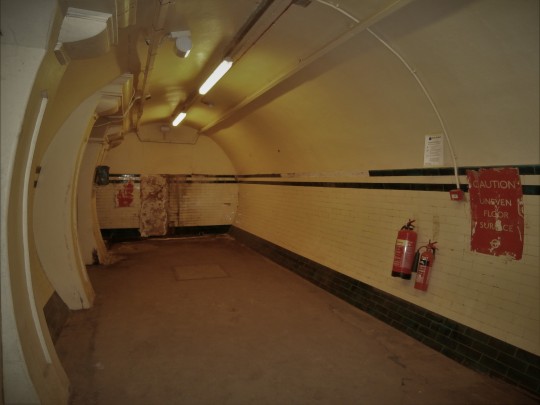
Strand station opened in November 1907 with two platforms, though normally only a single two-car train ran the shuttle service to Holborn and back from the western platform, as there was never a high number of passengers. The second, eastern platform quickly fell into disuse and was closed in 1914. The following year, the station was renamed as Aldwych, due to nearby Charing Cross being renamed as Strand.

In the First World War, the station served as both an unofficial air raid shelter for Londoners, and as an emergency store for 300 paintings from the National Gallery – these were kept in the disused eastern platform, its original wooden sleeper rails covered over. Continued low use meant that in 1917 Sunday services to the station were ended, and in 1922 the ticket office was closed, replaced with ticket booths inside the passenger lifts, where the attendant would double up as a booking clerk.
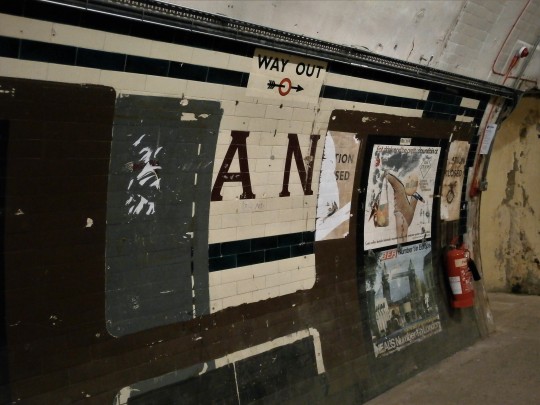
Aldwych served once more as an air raid shelter and artefact store in the Second World War. Tube services were suspended, to allow for beds to be slung between the rails of the western platform; at its peak the station could accommodate 1,500 people, and was fitted out with metal bunks, chemical toilets, a first aid post, canteen, and a library service. Meanwhile, the eastern platform hosted items from the V&A and British Museum, including the Elgin Marbles.

Post-WWII, usage remained low, eventually leading to the branch only being operational during peak hours, with Saturday services ending in 1962. The eastern tunnel, some of its rails exposed again, became a testing-ground for future station design, some of which is still in place, such as 1970s advertisements, and tiling patterns that would be used in a refurbishment of Piccadilly Circus station.

The late 1980s saw the installation of a modern ticket office and automated ticket barriers, but these saw little use before the station was closed in 1994, when the cost of repairing or replacing the original 1907 lifts could not be justified. Only about 450 people used the station each day – such low numbers meant that Aldwych had been running at a significant financial loss for many years, and any additional costs were too much for London Underground to bear.

Aldwych has found a second life, though, that has possibly made it more lucrative than it ever was as a passenger station. It had started to be used as a film set even before its closure (particularly at weekends), but after 1994 this became even easier. It has become the go-to place for any production needing an old-looking tube station (it even comes complete with an ex-Northern Line 1972 stock train), and has portrayed many different stations from the tube network in TV and movies such as V for Vendetta, The Imitation Game, Darkest Hour, Sherlock, and The ABC Murders. It is also used as a venue for exclusive art exhibitions, and as a training facility for the Underground’s Emergency Response Unit.

#london#uk#england#tube#underground#London Underground#ghost station#aldwych#station#the tube#hidden london#secret london#tunnels#piccadilly#Piccadilly line#Strand#WWI#WWII#air raid#shelter#british museum#V&A#V&A museum#elgin marbles#film#tv#filming location#sherlock#v for vendetta#London transport
25 notes
·
View notes
Text
Read The RPM Magazine January 2024 Issue - Celebrating 25 Years!
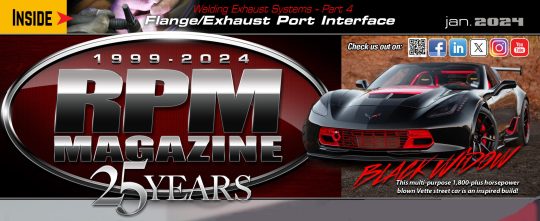
As we release the January 2024 issue, we also celebrate 25 years of Smoke and Gears with all of our readers, fans, subscribers and advertisers! Thanks for your support over the years!
100% Street Car...Period!...that also runs 7's in the quarter! Alan Whitaker’s killer 1972 Chevrolet Monte Carlo is a street car through and through, and it’s also the car he dreamed of owning since he was just 11 years old. “I was at a stop light in Whiteland IN. with my father at the age of 11 when a 1970-72 Monte Carlo blue with black vinyl top and rally wheels pulled up. I told my father that was the car I wanted when I’m old enough to drive,” explained Whitaker.
UNIQUE...Now here's something you just don't see every day, year...or decade! Almost 2 tons of love! The car measures 17 ½ feet long and from the factory weighed just shy, or just over 4,000 pounds, depending on options. This particular wagon was ordered as a 383 big block, 9-seater with air conditioning.
BLACK WIDOW...This multi-purpose 1,800-plus horsepower blown Vette street car is an inspired build. Life can be about focusing on negatives or the positives; Eric Simpson chose the latter. Simpson was once told that he was nothing but a shade tree mechanic and would never have anything worth talking about, "I built this car to prove the naysayers wrong!" This car was literally stock everything and is
now completely modified since 2019.
SMALL BUT FEROCIOUS...This Grudge racer Gremlin is a small-packaged supersized serving of nitrous'd nasty! By definition, a gremlin is ‘a mischievous folkloric creature invented at the beginning of the 20th century’. American Motors' definition was 'a pal to its friends and an ogre to its enemies,' a definition that Hollywood capitalized on with their movies, depicting the tiny beast as a cute furry little friend (a Mogwai)...
TECH INSIDER
Welding Exhaust System - Pt. 4 - Flange/Exhaust Port Interface So we are now finally ready to weld. Well, no, not quite. In the past three articles we have discussed various welding techniques, tube fitment and backpurging. As you can see, the key to a proper header build is attention to the details.
RPM HIDDEN GEM
All of the Above - From the pages of July 2017 - Gary Houghtaling's 1964 Ford Falcon X275 Gary Houghtaling,s twin turbo 1964 Falcon is entirely awesome!
Read the full article
0 notes
Text
Spec2 chambers for Kawasaki Triples
Spec2 makes 2 types of chambers for the Kawasaki triples. The Classics at $599.95 and the F1′s at $899.95. The primary difference is the silencing mechanism. The F1′s feature longer stingers with detachable aluminum sleeved silencers. The Classics have a stinger and baffle inside of a 2" tube. The longer stingers of the F1′s produce a little more mid-range. But, the overall performance is about the same.
The chambers are supplied unpainted.
The first photo shows a customer's restored H1. It features SPEC II's classic chambers.
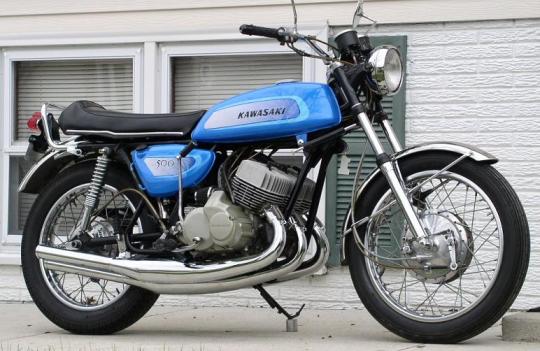
Here’s a photo of a 1972 H2 with the F1 chambers.

I have included a picture of my old H2 dragbike. I set the National Record in 1974 in the Altered class. This class required the stock footpegs. Things have sure changed since then.

This is a 1974 H2 with a custom paint job similar to Eddie Lawson’s racebikes of the early 1980′s.

23 notes
·
View notes